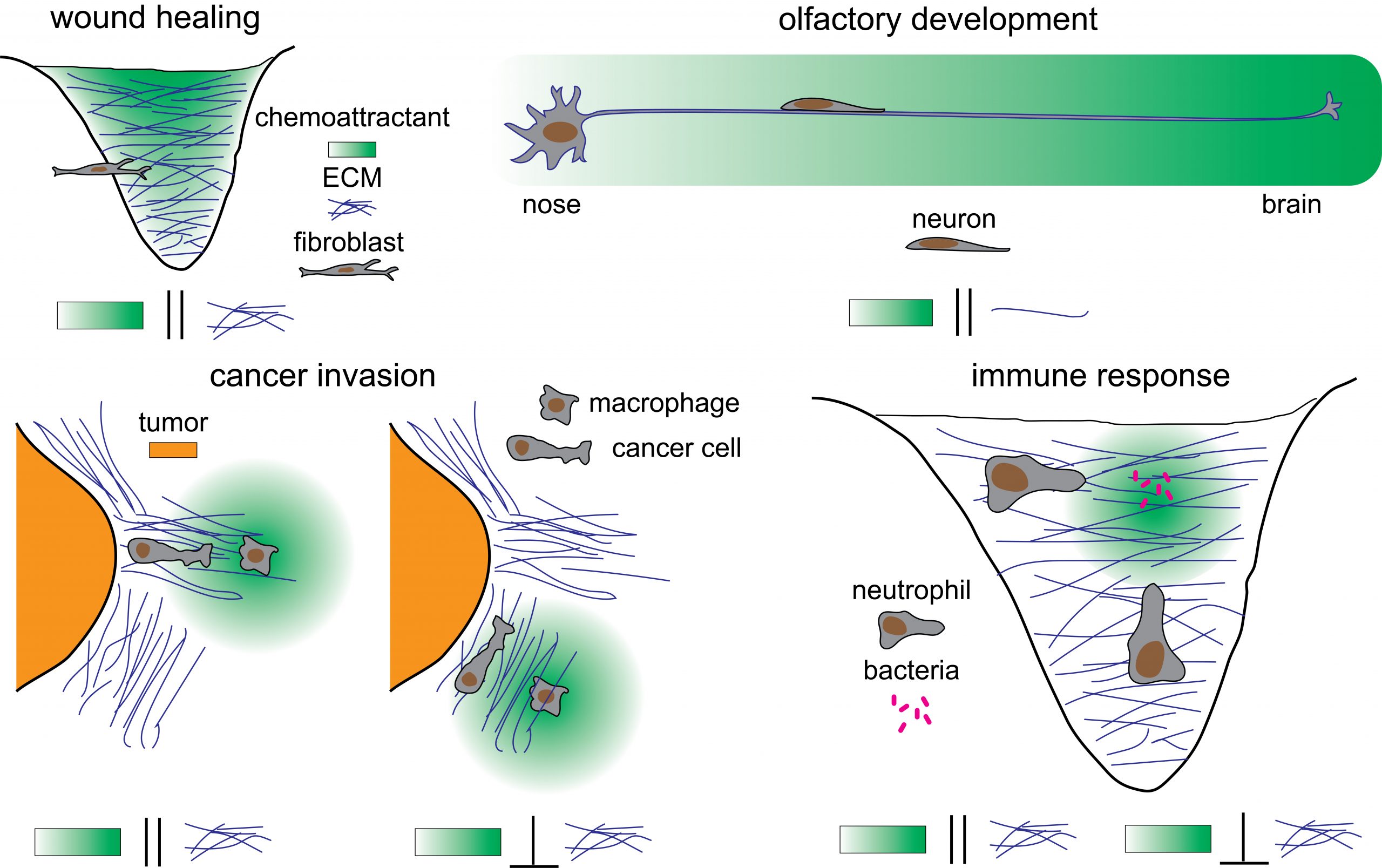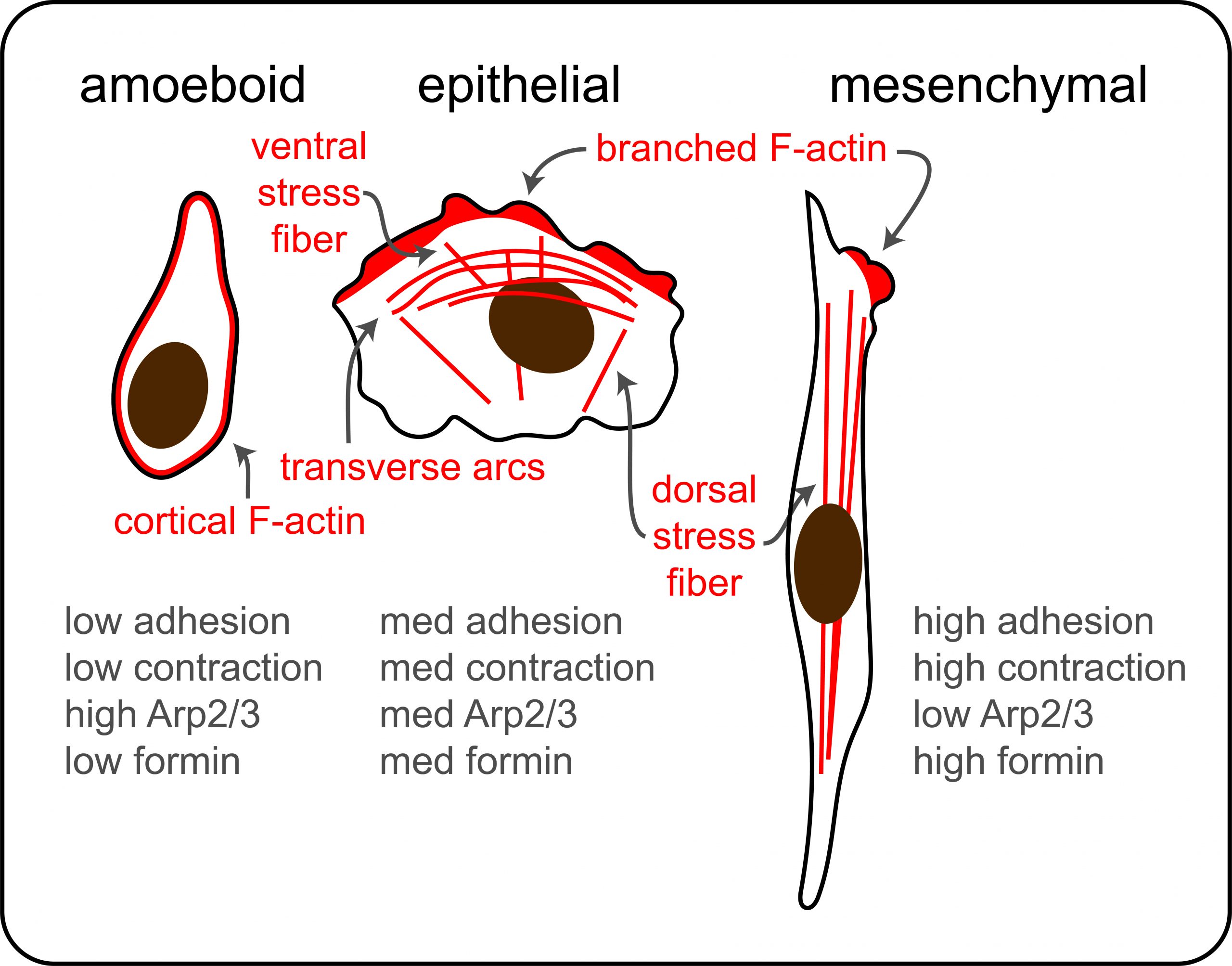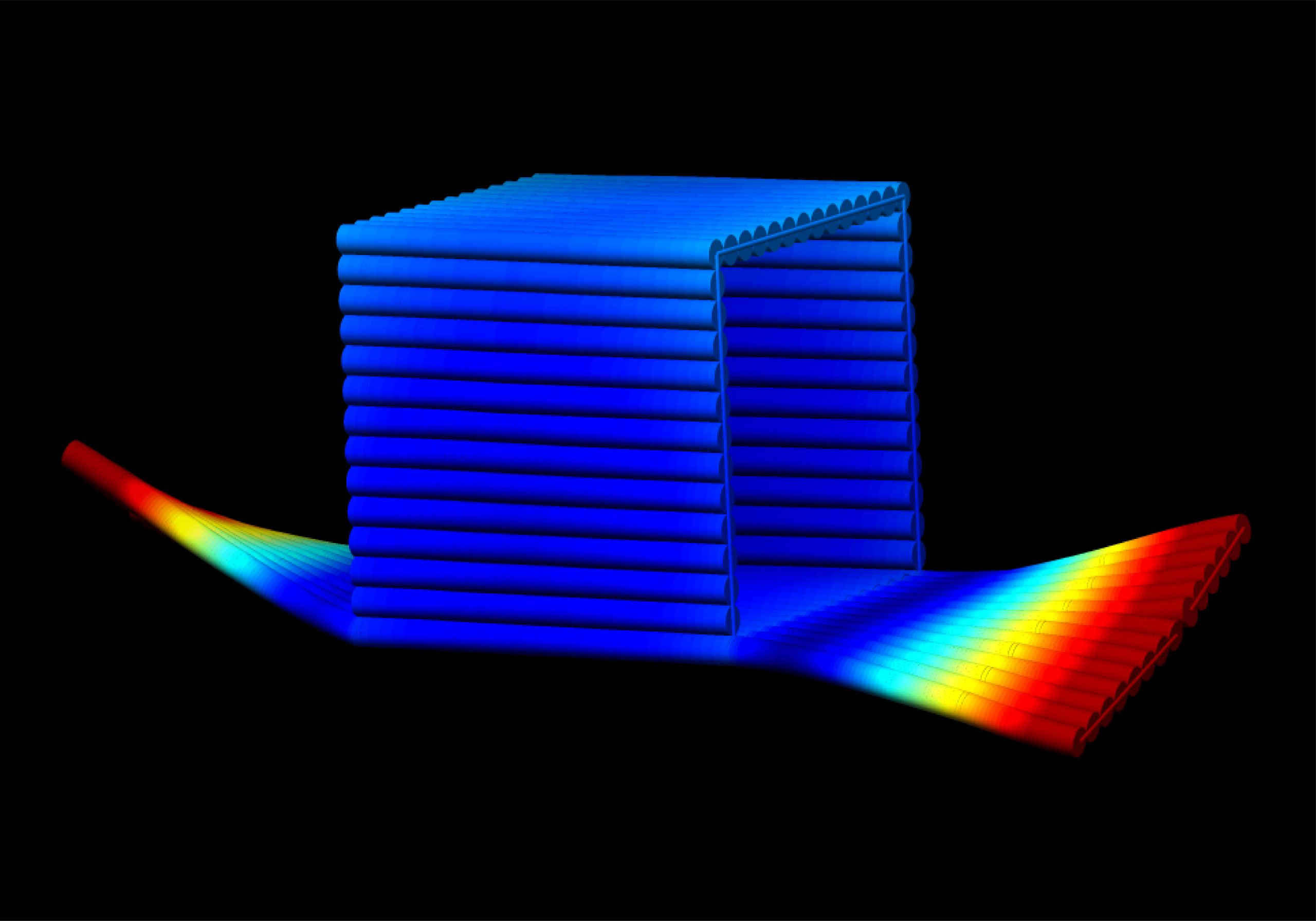-

Controlling Multi-cue Directional Migration Responses
Cell migration is important in many physiological processes such as wound healing as well as pathological processes such as cancer metastasis. Cells are directed to migrate towards targets by sensing gradients of chemical concentration (chemotaxis or haptotaxis) or stiffness (durotaxis or mechanotaxis). They can also be directed by aligned extracellular matrix fibers like collagen. While much is known about how cells sense and respond to single cues, very little is known about how cells sense multiple cues that could either cooperate or compete to direction cell migration. We use several approaches to align extracellular matrix and control mechanical property gradients simultaneously to understand how different cells respond to complex multi-cue environments.
-

Formin Regulation of Cell Migration and Extracellular Matrix Remodeling
Cell migration along with extracellular matrix remodeling are regulated in part by the F-actin cytoskeletal network. This network is formed through assembled of F-actin fibers that are aligned, branched and crosslinked, processes that are controlled by formins, Arp2/3, palladin and alpha-actinins. In addition, myosin II contractility can contract these networks allowing the cell to transmit force to the surroundings. While much is known about general processes that these F-actin regulators govern, specific family members’ roles in changing the composition of F-actin from linear to branched and crosslinked to contracted F-actin network, particular in the context of directed cell migration and extracellular matrix remodeling is unknown. We are using gene silencing and editing approaches coupled with our ability to control directional migration cues to tease out the role of formin family members in controlling different forms of directed cell migration and extracellular matrix remodeling.
-

DNA Origami-based Mechanical Release Drug Constructs
Cells actively pull on their surroundings using actomyosin-mediated force. In many diseases resulting in fibrosis improperly large forces are transmitted to the extracellular matrix, initiating disease or causing its progression. In addition, improper forces such as those caused during decompression sickness and mechanical ventilation may result in similar extracellular matrix deformation. What is needed is delivery constructs that can release drug locally and in response to these small forces. While materials have been designed for controlled release of drugs as well as release in response to local stimuli, materials that release drug in response to cell mediated forces are lacking. We are developing aptamers and DNA origami constructs to assemble hollow nanoscale structures that can open in response to forces. We intend to couple this with other stimuli sensitive approaches to create logic-controlled drug release constructs to deploy in a variety of different diseases.
